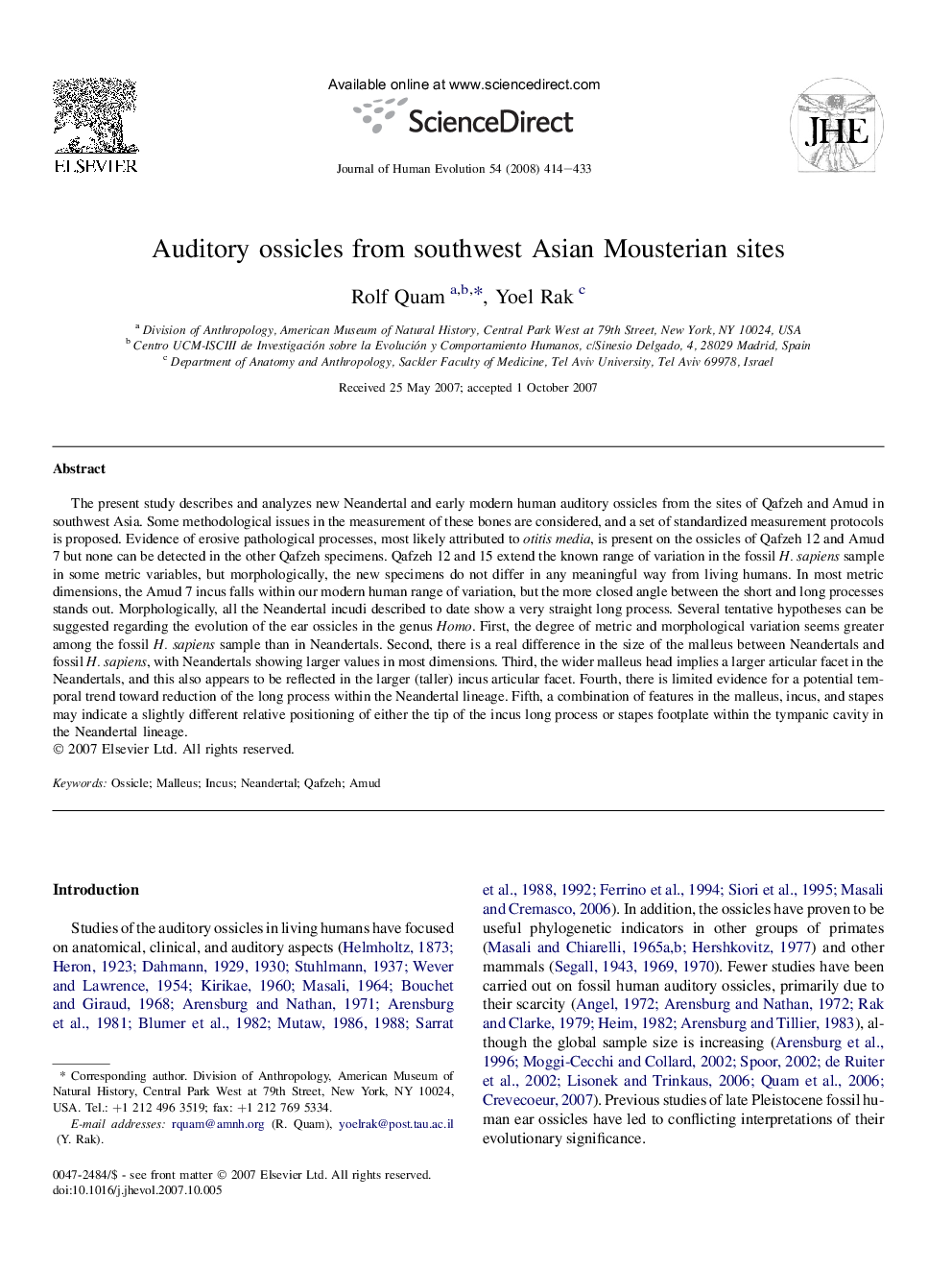| کد مقاله | کد نشریه | سال انتشار | مقاله انگلیسی | نسخه تمام متن |
|---|---|---|---|---|
| 4556916 | 1329512 | 2008 | 20 صفحه PDF | دانلود رایگان |

The present study describes and analyzes new Neandertal and early modern human auditory ossicles from the sites of Qafzeh and Amud in southwest Asia. Some methodological issues in the measurement of these bones are considered, and a set of standardized measurement protocols is proposed. Evidence of erosive pathological processes, most likely attributed to otitis media, is present on the ossicles of Qafzeh 12 and Amud 7 but none can be detected in the other Qafzeh specimens. Qafzeh 12 and 15 extend the known range of variation in the fossil H. sapiens sample in some metric variables, but morphologically, the new specimens do not differ in any meaningful way from living humans. In most metric dimensions, the Amud 7 incus falls within our modern human range of variation, but the more closed angle between the short and long processes stands out. Morphologically, all the Neandertal incudi described to date show a very straight long process. Several tentative hypotheses can be suggested regarding the evolution of the ear ossicles in the genus Homo. First, the degree of metric and morphological variation seems greater among the fossil H. sapiens sample than in Neandertals. Second, there is a real difference in the size of the malleus between Neandertals and fossil H. sapiens, with Neandertals showing larger values in most dimensions. Third, the wider malleus head implies a larger articular facet in the Neandertals, and this also appears to be reflected in the larger (taller) incus articular facet. Fourth, there is limited evidence for a potential temporal trend toward reduction of the long process within the Neandertal lineage. Fifth, a combination of features in the malleus, incus, and stapes may indicate a slightly different relative positioning of either the tip of the incus long process or stapes footplate within the tympanic cavity in the Neandertal lineage.
Journal: Journal of Human Evolution - Volume 54, Issue 3, March 2008, Pages 414–433